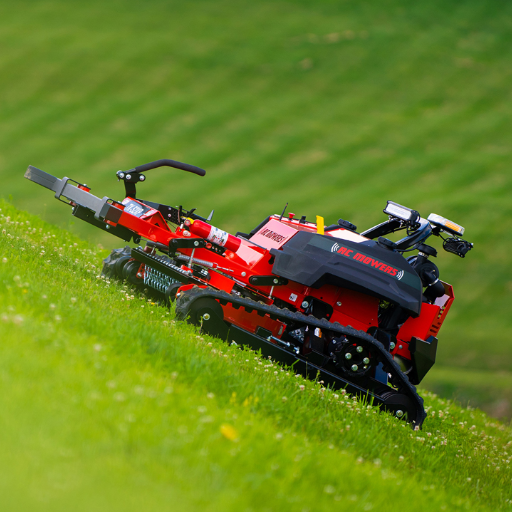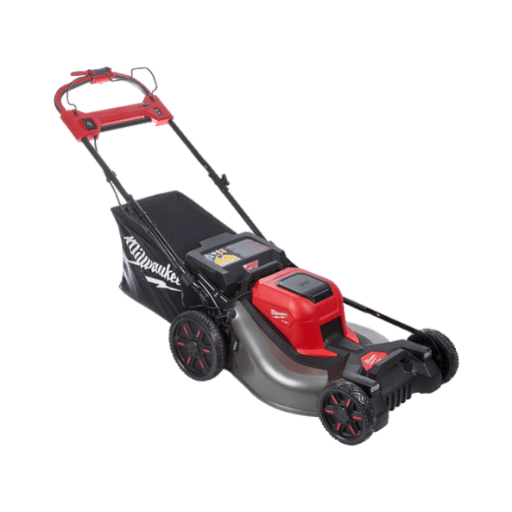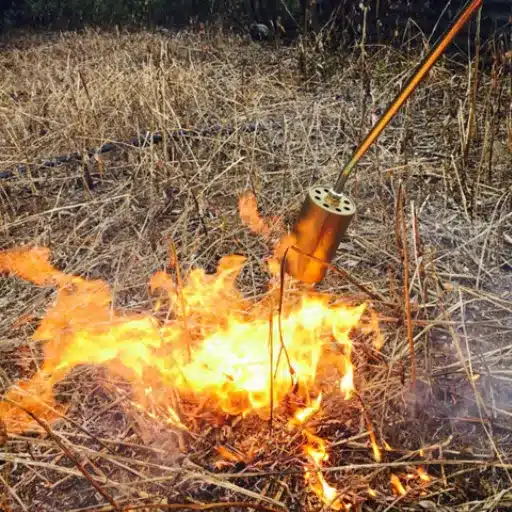Maintaining large landscapes has always been a daunting, time-consuming task, but now RC Mowers is breaking new ground with remote-control technology. Infusing innovation with efficiency, RC Mowers is laying down a whole new line of lawn care now professionals can be able to conquer difficult terrains with increased safety and productivity at the press of a button. This article dwells into how their cutting-edge solutions are changing the world of landscaping, heralding the future of efficient technology-laden lawn maintenance. Prepare to be amazed at how RC Mowers is rewriting the possibilities of lawn care.
Introduction to RC Mowers

RC Mowers is a very innovative company concerning remote-operated and robotic mowers that mow on difficult terrains challenging their efficiency and safety. Their solutions advertise state-of-the-art technology to ensure greater productivity while lessening manual labor and bettering operator safety. With very good intent for innovation, they are changing lawn maintenance by providing dependable, easy-to-use tools that simplify lawn care yet produce fantastic results.
What is an RC Mower?
An RC Mower or remote control lawn mower is the excellent technical equipment for mowing in hard situations in a secure manner. These mowers are equipped with advanced remote-control technology so the users can operate them from a distance in hazardous or hard-to-reach locations instead of manual operation. RC Mowers are equipped to handle steep slopes, uneven terrains, and thick vegetation. Hence, they can prove to be a blessing to many sectors like landscaping, municipal maintenance, and environmental management.
Equipped with powerful engines and fairly sturdy tracks or wheels, most RC Mowers can negotiate inclines of about 50 degrees or more, depending on the model. This feature guarantees extreme versatility across hilly or rugged terrains. Modern models come equipped with GPS and automated programmable controls that define the mowing patterns with utmost precision and efficiency, requiring no further input from the user. Safety also remains a dominant factor as operators navigate their worksite at a safe distance, thereby preventing any risks associated with unstable ground or dangerous obstacles.
The ever-increasing employment of RC Mowers shows indications toward making an industry more productive at the same time as lowering labor costs and addressing safety concerns in industries requiring efficient land management tools.
How Remote Control Technology Works in Lawn Mowers
Lawn mower remote control technology integrates a host of advanced components including RF systems, sensors, and programmable microcontrollers. The operator uses the remote control to send signals to the mower; these signals are received and processed onboard to carry out the commands for steering, acceleration, and stopping.
These designs operate with high precision control usually connected with Bluetooth or Wi-Fi connectivity for short-range operation. Small lawn mower operations in extensive outdoor areas make use of GPS navigation. Some varieties of remote lawn mower systems are designed with obstacle detection through ultrasonic or IR sensors, allowing the machine to cleverly react to the terrain and circumvent collisions that could cause damage. For stabilization and direction, even on rough slopes with exactness and efficiency, gyroscopes and accelerometers keep these mowers oriented.
Data says that these technologies can be relevantly large time mowers, reducing the mowing time by up to 40%, especially for large properties. Besides, these mowers guarantee safety by restricting human operators from going into the field in question, for example, steep slopes or lands full of debris. In a coordinated manner, both precision engineering and automation provide measurable benefits to productivity, safety, and cost-efficiency in landscape management.
Benefits of Using Remote Control Lawn Mowers
Enhanced Productivity and Time Efficiency
Remote control lawn mowers are meant to ensure productivity is enhanced to the fullest while also simplifying the lawn care process. These mowers cover big areas quicker and more efficiently, which enable operators to finish in much less time compared with the traditional ones. For instance, the advanced ones can mow 2.5 acres in a single hour providing big time boosts into management for large-scale landscaping activities.
Higher Safety Standards
Being precarious terrain, uncertain terrains can pose great risk to conventional grass cutters. It thus poses a great hazard to the operators working in such terrains with conventional mowers. Remote-control mowers will allow operators to stay far away from unsafe zones: areas with steep slopes, uneven terrains, or terrains littered with obstacles. Properly equipped with sensors, remote control lawn mowers incorporate slope sensors measuring grade and stability-assist technology to operate successfully in grades between 35 and 45 degrees without hindrance to performance or operator safety.
Greater Cost Savings and Longevity
Remote lawn mowers can be the best investment for a property manager or landscaping team by way of long-term savings. The machines were purposefully built with sturdy components to ensure a longer life and cheaper maintenance costs thereafter. Furthermore, fewer labor hours and fewer operators needed mean a big saving opportunity, especially for firms that oversee huge tracts of land.
Environmentally Sound
Taking an ergonomic and low-emission approach, the different engines operating in remote control mowers work toward landscaping in an eco-friendly manner. Usually, these machines emit fewer noxious gases and consume less energy, which comes under the purview of environmental laws and sustainability goals. Some models are now incorporating smart energy management systems, which optimize power usage and thereby further minimize the carbon footprint of landscaping operations.
More Accurate and Controlled Landscaping
Fitted with state-of-the-art machinery and tools, remote control mowers provide a perfect mowing operation from GPS-assisted navigation systems all the way to height control of the cutting blade. Such sophistication removes random events associated with a manual approach and guarantees that any lawn is mowed perfectly.
Thus, the adoption of remote-controlled mowers crafts an innovative mechanism that makes lawn maintenance easier while respecting safety, ecological, and cost factors. The presence of these benefits makes remote control lawn mowers an invaluable tool in contemporary landscape care.
Features of RC Lawn Mowers

- Remote Operation: The mower can be operated at a distance with minimum physical effort, providing a certain safety advantage when dealing with uneven terrain or hazards.
- Precision Cutting: Trim even across landscapes, securing high-quality results every time.
- Adjustable Settings: Settings include the cutting height and speed that can accommodate any type of grass and condition.
- Environmentally Friendly: Several models utilize electric or battery-powered systems, which means fewer pollutants.
- Safety Features: Emergency stop, object detection, and anti-roll functions ensure safe operation.
- Compact but Durable: It is designed to fit into tight spaces while retaining its durability to withstand tough outdoor environments.
Key Features of Popular RC Mower Models
- Advanced Navigation Systems
Modern RC mower models are equipped with GPS-assisted navigation and mapping technologies. These features allow the mowers to create precise mowing patterns, avoid obstacles, and cover large areas with minimal manual intervention. For example, high-end models can achieve lawn coverage efficiency of up to 95%, reducing uncut patches and overlaps.
- Variable Cutting Height Adjustments
Many RC mowers now come with adjustable cutting height settings, often ranging from 0.8 inches to 4 inches. This enables users to customize grass cutting for various lawn types, ensuring optimal results for both residential and commercial landscapes.
- High-Performance Batteries
Lithium-ion batteries are standard in most leading models, providing longer runtimes and shorter charging periods. Some popular models can operate for up to 2-3 hours continuously on a full charge and require only 60-90 minutes to recharge, making them suitable for large-scale use.
- Powerful Brushless Motors
Brushless motors not only extend the lifespan of RC mowers but also enhance energy efficiency. They offer quieter operation compared to traditional motors while delivering sufficient power to handle dense grass and light uneven terrain.
- Rain and Weather Sensors
Weather resistance is a key feature of advanced RC mowers. Many models come with built-in rain sensors that automatically redirect the mower back to its charging station when wet conditions are detected, thereby preventing clumping and uneven mowing caused by damp grass.
- Wide-Area Coverage
Premium RC mowers can manage land sizes ranging from 0.5 to 5 acres. They are equipped with larger cutting widths, such as 20 inches or more, drastically reducing the total time required for maintaining expansive areas.
- App Connectivity and Smart Features
Many RC mowers now offer smartphone app integration, enabling users to control mowing schedules, monitor progress, and adjust settings remotely. Some even incorporate voice assistant compatibility to enhance convenience and accessibility.
- Eco-Friendly Operation
With zero emissions and low energy consumption, RC mowers are an environmentally friendly option for lawn maintenance. According to recent claims by manufacturers, some models reduce energy usage by up to 30% compared to gas-powered mowers.
By integrating cutting-edge technology and user-friendly features, RC mower models are transforming how landscapes are maintained, delivering efficiency, precision, and sustainability.
Comparative Analysis of RC Lawn Mowers and Traditional Lawn Mowers
RC Mowers outperform traditional mowers in steep slope handling, labor efficiency, safety, niche applications, and year-round usability.
|
Key Point |
RC Mowers |
Traditional |
|---|---|---|
|
Steep Slopes |
Handles up to 50° |
Limited capability |
|
Labor |
1 operator needed |
Requires larger crew |
|
Safety |
Remote operation |
Higher risk for workers |
|
Efficiency |
High productivity |
Slower on tough terrain |
|
Niche Work |
Specialized tasks |
General mowing only |
|
Year-Round |
All-season use |
Seasonal limitations |
|
Durability |
Built for tough jobs |
Standard durability |
|
Cost-Saving |
Reduces labor costs |
Higher labor expenses |
|
Technology |
Advanced automation |
Manual operation |
|
Terrain |
Hazardous areas |
Limited adaptability |
Technological Innovations in Remote-Controlled Mowers
Reshaping groundskeeping tools with multiple technological gadgets enhancing efficiency, accuracy, and user-friendliness has always been the r&d focus over the years-by far the biggest technological advances have been the GPS-based navigation; through these systems, mowers are forced to create maps, and then inform a route to be followed to map the complete area, while also avoiding any obstacles present. Some of the RC mowers now offer autonomous operation modes: the pre-programmed paths and geofencing assure safe and consistent performance without the need of being directly controlled.
Battery technology in the RC mowers has also seen impressive advances in recent years. Modern-day lithium-ion batteries provide less weight and longer run times with faster charging and being more energy-efficient, with some mowers holding up to 50% more energy retention capacity than older units. As such, users will get longer working hours while being environmentally conscious because of zero emissions.
The other significant innovation is the installation of AI-driven sensors and smart technology. Mowers equipped with these features can detect changes in terrain, grass density, and even weather changes, adjusting in real time for cutting height, speed, and power consumption. For example, adaptive motors make themselves weaker and stronger in response to grass thickness or slope, ensuring reduced wear and consistent finishing.
The involvement of remote control and surveillance has been added by mobile and app-based interfaces. For example, from their smartphones, they can operate the mowers, monitor performance metrics, and receive alerts when maintenance is necessary. These `uber-innovations’ together make an RC mower the next-generation choice, well and truly appealing to both residential and commercial users looking for a precise and green option.
Applications and Use Cases

RC mowers cater to different needs in residential, commercial, and industrial markets. For a homeowner, it makes the upkeep of a lawn efficient, right down to precision-working with ease on secondary terrain. Commercial landscaping contracts use RC mowers for large-scale operations, increasing output and cutting man-hours. The mowers are great for also managing the `hard’ work of steep slopes, rough terrains, and remote areas, thus allowing agricultural purposes, municipal property maintenance activities, and land management implementations. They therefore readily suit the new landscaping needs due to their flexibility and greener approach.
Using RC Mowers for Residential Lawn Care
Increased demands for efficient work, precision, and versatility have led to RC mowers gaining popularity in residential lawn care applications. These ultra-modern machines collectively provide owners with the opportunity to take care of their gem while leaving behind the hard work and ending the task at a professional level. Promoting remote control functionality is an apt consideration when mowing grass in risky or hard-to-reach areas, such as adjacent to steep slopes or uneven terrains. Thus, safety and convenience are assured.
Statistics show that the modern RC mower can shave mowing time by up to 50% compared to a traditional push-on lawn mower or ride-on mower, giving us a considerable improvement in efficiency. On the other hand, several models feature GPS-guided technology and sophisticated sensors to avoid hitting obstacles such as flowerbeds or trees while ensuring thorough and even cover. Their green designs, which mostly use battery-powered motors, will reduce carbon emissions, and that is what the selling point for a sustainable home nowadays.
Lawn mowers can get quite loud, but RC mowers are a special treat for residential neighborhoods because the drivers can hardly hear them. With various sizes and customizable features, the mowers cater to everything from small urban gardens to bigger suburban properties, mixing innovation with practical performance and changing the face of traditional lawn care.
Commercial Applications: Public Works and Landscape Maintenance
RC Mowers’ commercial applications include steep slope maintenance, hazardous terrain mowing, wetland vegetation management, roadside and bridge embankment work, landfill slope management, fire fuels reduction, and retention pond maintenance.
|
Key Point |
Details |
|---|---|
|
Steep Slopes |
Mow inclines up to 50° |
|
Hazardous Areas |
Safe remote operation |
|
Wetlands |
Vegetation management |
|
Roadsides |
Embankment maintenance |
|
Landfills |
Slope management |
|
Fire Safety |
Fuels reduction |
|
Retention Ponds |
Vegetation control |
|
Labor Savings |
1 operator vs. 5-7 crew |
|
Year-Round Use |
All-season applications |
|
Niche Work |
Specialized services |
RC Mowers for Steep Slopes and Challenging Terrain
RC Mowers excel in steep slope mowing, hazardous terrain management, wetland vegetation control, landfill slope maintenance, and fire fuels reduction.
|
Key Point |
Details |
|---|---|
|
Steep Slopes |
Mow up to 50° inclines |
|
Hazardous Areas |
Safe remote operation |
|
Wetlands |
Vegetation management |
|
Landfills |
Slope maintenance |
|
Fire Safety |
Fuels reduction |
|
Efficiency |
1 operator, high output |
|
Durability |
Handles tough conditions |
|
Niche Work |
Specialized applications |
|
Year-Round |
All-season usability |
|
Cost-Saving |
Reduces labor expenses |
Industry Trends and Future of RC Mowers

The demand for RC Mowers keeps increasing since they provide for labor issues, efficiency, and safety in landscaping operations. Key trends in the industry include a higher demand for green solutions-e.g., electric-powered models-and enhanced autonomous tech, thereby increasing precision and reducing manual oversight.
Hence, one may expect future RC mowers to incorporate continuous design into AI optimized navigation and enhanced adaptability for varying terrains; from the other view, a percolation-resistant adoption will be observed with industries focusing on sustainability and a costing perspective to current alternatives that place RC mowers at the center of landscaping and public works.
Emerging Trends in Robotic Lawn Care Technology
The lawn mowing service is developing robotically, and its development is driven by automation, AI, and environmentalism. A raging trend is one that has systems backward with AI to increase navigation accuracy and keep obstacles at bay: robotic mowers use these systems to map complex terrain, detect objects like garden furniture or plants, and adapt uniquely tuned lawn patterns. AI algorithms are supposed to benefit efficiency greatly, whereas some robotic lawn mowers can operate almost 30% faster and cover a bigger area than their old counterparts.
Another new trend becomes smart connectivity with IoT features. Nowadays, if a robotic mower is integrated with a mobile app, the user can remotely schedule tasks, watch the actual performance, and get alerts in real-time. Moreover, several models also come with voice commands through common virtual assistants, making everything a smooth operation for the user.
Sustainability also has a part to play in shaping the future of this industry. Hence, eco-friendly initiatives have nurtured the introduction of more battery-powered mowers, with longer runtimes and efficiency in energy use. Lithium-ion batteries, for example, offer greater life-cycle generalities while bearing less environmental impact. The solar route also peeps in, catering to those chasing a green path.
Lastly, when the robots began to be used year-round and this changed the weather-resistance aspect, durability also came in notice. All in all, the advanced models now boast all-weather operation in light rain or under all sorts of climatic changes, with an internal shielding mechanism. Massachusetts combines these trends to further highlight the rapid evolution of the robotic lawn-care industry into an efficient and eco-friendly alternative to modern landscaping needs.
The Role of Autonomous Mowing Robots in Lawn Care
The autonomous mowers have made me approach lawn care radically differently-from saving time and energy to ensuring consistent high-quality output. These machines effectively control the height of the grass, requiring less manual intervention and allowing me to focus my attention on other priorities. Along with their autonomy, the ability to negotiate the terrain and weather conditions makes these machines the perfect companion for a perfectly manicured lawn, with the least application of effort.
Market Growth and Consumer Adoption of RC Mowers
With the dawn of remote-controlled (R.C.) mowers, lawn maintenance is undergoing a rapidly accelerated metamorphosis. Therefore, with the advancements in robotic technology and consumers becoming more interested in the idea of automation, the industry of R.C. mowers will undergo substantial growth in the upcoming few years. The market for robotic lawn mowers is forecasted to cross the $3 billion mark by 2025, recording a CAGR of around 12% during its forecast period, as per different market reports.
Convenience and smart-home technologies are key issues that push the popularity of these products, while increased environmental awareness provides the backdrop for the eco-friendly nature of robotic lawn mowers, which substitute fuel-powered lawn maintenance equipment with energy-efficient electric technology and thus, can be marketed to the environmentally conscious as green technology.
Owing to this environment, though slowly, adoption among consumers has been increasing steadily in both residential and commercial. Homeowners invest in RC mowers to save time and energy, particularly when the lawn is large or uneven. On the commercial side, these landscape companies are integrating these devices into their systems to greatly enhance productivity, reduce worker costs, and ensure high-precision results. Also, with functionalities such as adaptive terrain navigation, weather-proof designs, and programmable schedules, RC mowers are among the things that attract casual users and professionals alike.
The data also indicate a high inception of connected technologies within such RC mowers, with app integration and GPS capabilities just being pieces of the real-time tracking and operational efficiency puzzle. Currently, North America and Europe are bearing their leadership in adoption; however, Asia-Pacific has quickly become another hotbed in that regard, with increasing urbanization and technological adoption.
Emerging as an instrument for modern landscaping, these remote-controlled mowers symbolize the advances and adaptations in the old-fashioned manual lawn-care procedure based on sudden growth in market demand and customer interest.
Buying Guide for RC Mowers

- Terrain Type
Evaluate the terrain you plan to mow. Steep slopes, uneven ground, or flat surfaces will require different mower capabilities such as enhanced traction or all-terrain functionality.
- Cutting Width and Height
Check the mower’s cutting width and adjustable height settings. A wider cutting width can cover more area quickly, while adjustable heights provide flexibility for various grass types.
- Battery Life or Fuel Type
Assess whether the mower is electric or fuel-powered. Electric models are quiet and eco-friendly, but ensure sufficient battery life for the size of your property. Fuel-powered options may offer longer runtime.
- Safety Features
Look for features like obstacle detection, automatic shutoff, and reliable remote controls to ensure safe operation, especially on challenging surfaces.
- Maintenance Requirements
Choose a mower with accessible maintenance options, such as easy blade replacements and routine cleaning. Low-maintenance models save time and resources.
- Manufacturer Support
Research customer reviews and ensure the manufacturer provides a robust warranty, customer service, and replacement parts availability.
- Cost and Budget
Compare pricing across models that meet your requirements. While higher upfront costs may provide advanced features, balance this with your long-term usage needs.
Factors to Consider When Choosing an RC Lawn Mower
In the case of considering an RC lawn mower, I tend to look into the size and compatibility with my terrain, so it suits my yard needs. I also consider battery life and runtime so that there is no interruption during mowing. Low-maintenance requirements imply saving time; hence, I choose one with durable materials and easy upkeep. I consider manufacturer support to be critical, so I look for those offering solid warranties and readily available customer service. Finally, I will analyze the pricing to achieve a balance between features and my present budget and value over a long term.
Top RC Mower Models in the USA
- Husqvarna Automower 430X
The Husqvarna Automower 430X is a market leader in robotic lawn mowers. Equipped with GPS navigation and weather resistance, it effortlessly handles up to 0.8 acres. This model features a cutting height range of 0.8 to 2.4 inches, ensuring precision trimming for various grass types. With a noise level of just 58 dB, it operates quietly and efficiently. Pricing starts at approximately $2,499, making it a premium choice for advanced features.
- Worx Landroid L WR155
Designed for lawns up to ½ acre, the Worx Landroid L WR155 offers excellent performance at an affordable price. This model includes a patented AIA (Artificial Intelligence Algorithm) for navigating narrow paths, along with customizable mowing schedules via a connected app. Boasting a cutting height of 1.9 to 3.5 inches, it adapts well to different landscaping needs. Its cost is around $1,199, appealing to budget-conscious users seeking reliable automation.
- Robomow RS630
The Robomow RS630 is ideal for larger lawns up to ¾ acre. It features dual blades, a robust 22-inch cutting deck, and the ability to handle slopes of up to 20 degrees. Added benefits include app-based remote control and built-in rain sensors to prevent mowing in wet conditions. The RS630 is valued at roughly $1,799, offering efficiency and durability for mid-sized properties.
- Greenworks Optimow 50H
Compact yet powerful, the Greenworks Optimow 50H covers up to ¾ acre. This model provides an adjustable cutting height from 2.4 to 4 inches and supports app-based operation for easy scheduling. Designed for quiet operation with an average noise level of 60 dB, it works seamlessly without disturbing its surroundings. Priced at about $1,499, it stands as a strong mid-range option.
- DeWalt Robotic Mower DXMR144
Known for their robust tools, DeWalt brings quality to the robotic mower market with the DXMR144. This device excels in durability and precision, covering up to 1 acre. Key features include a high-capacity lithium-ion battery, height-adjustable cutting blades, and smart connectivity for scheduling. With a price around $2,699, it serves professionals and homeowners seeking superior performance.
These models represent a mix of cost-efficiency, advanced features, and reliability tailored to a variety of lawn sizes and user preferences. When selecting an RC mower, evaluating your lawn’s unique demands and matching them with these options will ensure long-term satisfaction and value.
Cost Analysis: Investment in Remote Control Lawn Mowers
An RC mower offers serious benefits to the buyer, but knowing about the cost implications and agreeing on them will allow the buyer to come to good conclusions. RC mower prices vary depending on features, power, and class. Basic models that suffice for smaller lawns and minimum requirements generally average anywhere between $1,500 and $2,000. Such models usually do have a remote control-based operation and basic levels of programmability.
Additional advanced options become accessible in mid-range models, which range in price from $2,000 to $3,500. Typical options include higher battery capacity, adjustable cutting heights, and better capability to handle terrain, making them better suited to medium-to-large-sized lawns. Premium RC lawn mowers, conversely, start at $4,000. The sleek, modern options rely on high-tech methods such as AI navigation, sensor arrays for obstacle detection, and the finest cutting mechanisms. These models are preferred mostly by professional landscapers and owners of very large lawns, given their capabilities and efficiency.
While it may seem a big financial commitment up front, the RC mower is actually a saving option, long term. Traditional lawn upkeep demands expenses such as fuel, maintenance, or the occasional gardener. RC mowers, on the other hand, operate on standard rechargeable batteries and require virtually no maintenance, thereby allowing more savings to be realized over time. Time becomes free when the owner is not roving about with the mowers.
When comparing costs against benefits, the specific lawn needs need to be considered, such as the size, the difficulty of the terrain, and the features required. When these aspects are considered, buyers reward themselves by investing only in their needs, which will, in turn, give them more satisfaction and value for years to come.
Reference Sources
-
The Next Generation Autonomous Lawn Mower
Link to Source
This document discusses advancements in autonomous lawn mower technology, including battery-powered and self-recharging systems. -
Tenth Annual Report of the Farm Management Service
Link to Source
This report provides insights into agricultural and land management practices, which may include applications relevant to RC Mowers. -
ROMO – Robotic Autonomous Lawn Mower
Link to Source
This report details the design and implementation of a robotic autonomous lawn mower, including technical specifications and applications.
Frequently Asked Questions (FAQs)
What are rc mowers and how do they work?
RC mowers, or remote-controlled mowers, are robotic lawn mowers that operate autonomously. They are designed to navigate and maintain lawns with minimal human intervention. By using advanced technology, these mowers can efficiently trim grass, even in challenging terrains. Their remote control operation allows users to manage mowing schedules and monitor performance from a distance, making lawn care more convenient.
How do autonomous mowing robots™ compare to traditional lawn mowers?
Autonomous mowing robots™ offer several advantages over traditional lawn mowers. They can operate on slopes up to 45 degrees, allowing them to tackle steep terrain where conventional mowers may struggle. Additionally, these robotic mowers provide a faster job turnaround and can take on more contracts without overloading the operator. This efficiency makes them a valuable solution in the landscaping industry.
What are the slope capabilities of rc slope mowers?
RC slope mowers are specifically designed to handle steep inclines, with some models capable of mowing slopes near runways. Their slope mowing capabilities allow them to operate in hazardous terrain where traditional mowers fail, making them ideal for commercial remote control lawn maintenance in challenging environments.
Can rc mowers handle hazardous terrain?
Yes, rc mowers are engineered to manage hazardous terrain effectively. Their robust design and advanced navigation systems enable them to operate in areas that would be difficult or unsafe for traditional mowers. This feature is particularly beneficial for public works and commercial landscaping projects that require reliable mowing solutions.
What should I look for in a remote-controlled lawn mower?
When choosing a remote-controlled lawn mower, consider factors such as slope capability, battery life, cutting width, and ease of use. It’s also essential to look for features that allow for remote access to tough terrain and ensure the mower is designed to handle the specific landscape you intend to maintain. Additionally, a model that supports autonomous mowing can significantly reduce manual labor.
How can rc mowers help landscaping businesses?
RC mowers can greatly benefit landscaping businesses by redefining the business of mowing. They allow operators to maintain detail landscape areas while reducing labor costs. With the ability to generate the same revenue as a crew without the need for constant supervision, these mowers enhance efficiency and productivity, enabling businesses to expand their services.
What is the significance of remote access to tough terrain?
Remote access to tough terrain is crucial for effective lawn care, especially in locations with challenging topography. RC mowers with this capability can navigate steep slopes and hazardous areas without compromising safety. This feature allows landscaping professionals to manage difficult jobs more effectively, ensuring a higher quality of service for their clients.
What are the benefits of using remote-operated robotic mowers?
Remote-operated robotic mowers offer numerous benefits, including increased efficiency, reduced labor costs, and the ability to work in hazardous environments. They can operate autonomously, allowing users to focus on other tasks while the mower takes care of lawn maintenance. Additionally, these mowers can handle different types of terrain, making them an ideal choice for various landscaping applications.
How do I choose the right rc mower for my needs?
Choosing the right rc mower involves assessing your specific lawn care needs, such as the size of the area to be mowed, the types of terrain, and the desired features. Look for a model that balances performance and ease of use, and consider factors such as slope capability and autonomous mowing features to ensure it meets your requirements.









